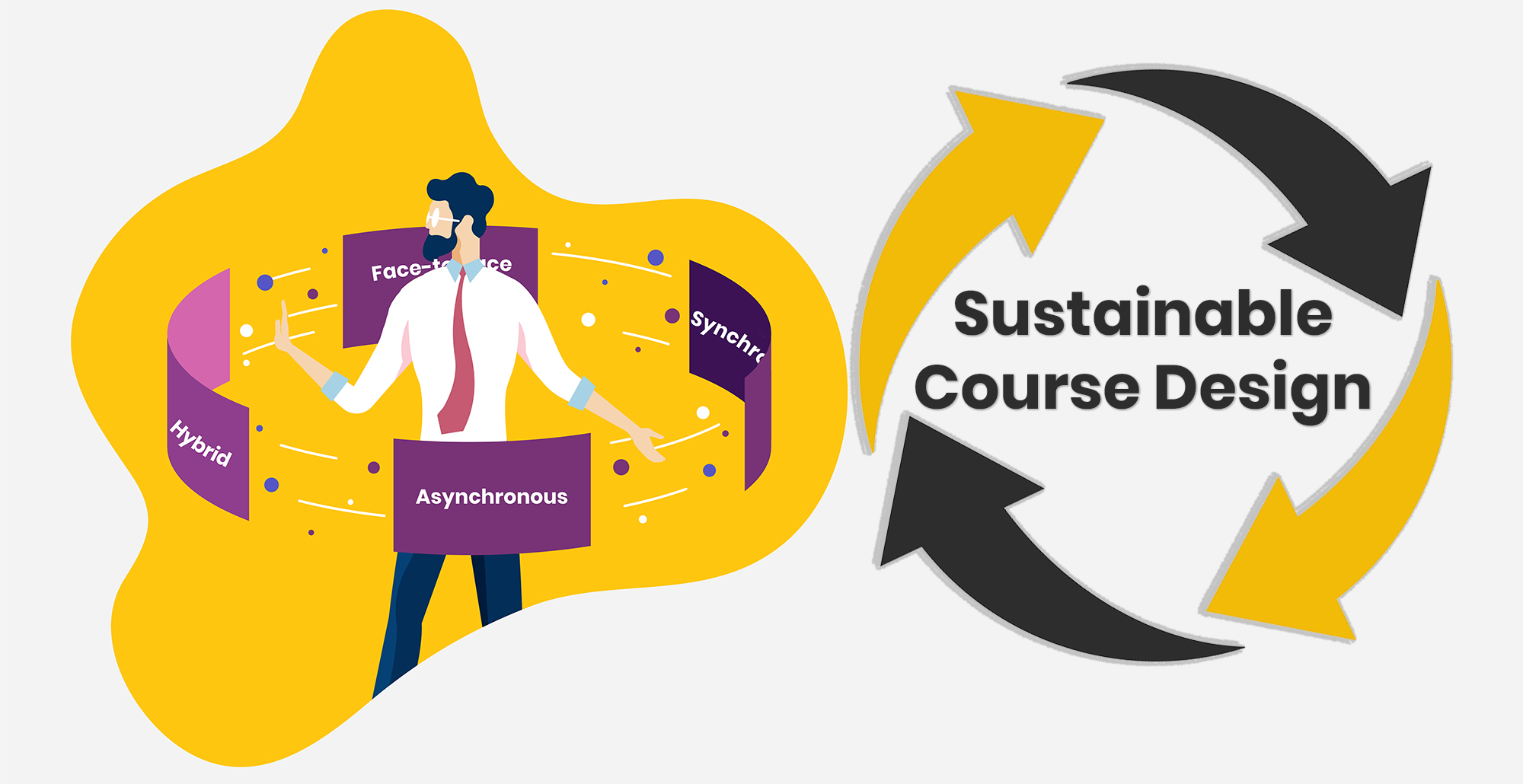Sustainable Course Design
Table of Contents
- What is sustainable course design?
- What’s the benefit of using sustainable course design for faculty?
- Important features of sustainable course design
- References/Recommendations
What is sustainable course design?
Sustainable course design means designing your course in D2L for the greatest transactional distance. This means developing an online course with design components that can be selectively hidden and released to fit the modality and schedule of your course which allows the course to be used in different modalities like face-to-face, hybrid, synchronous and asynchronous.

What’s the benefit of using sustainable course design for faculty?
Time! When faculty design a course based on sustainable design concepts in D2L, they save time because they build a course which is flexible and needs minimal tweaking, based on the modality they need to teach in. So, for example, an online asynchronous course can be turned into a hybrid course, by turning off (hiding) recorded lectures online in D2L and taking up those concepts in a FTF classroom or having learners watch/listen to recorded lectures at home and exploring/collaborating on concepts through project and group work, in a classroom, thus flipping your class.
Important features of sustainable course design
Always include a course syllabus and schedule with details that are important for learners to know before, during and after the
course is over.
Including a course alignment map which outlines the course and module level objectives, designing, and developing
assessments that are aligned to these objectives and providing content in the form
of textual /audio lectures, video lectures, images, scholarly articles, websites,
and resources (YouTube, TEDTalks etc.), that help learners work on assessments and
support them in meeting their learning goals. A course alignment map provides a birds
eye view of how objectives, content, assessments, and activities are aligned / related
to each other and helps instructors align their course to student learning goals.
It also helps them structure their course in D2L.
Creating presence in your course: This begins with outlining a communication and Feedback plan which helps create teaching,
cognitive and social presence in a course, These are important components of any course
design, no matter what modality you choose to teach in. For example, all courses must
have a welcome announcement prepared for day one of the course which welcomes learners
to the class and instructs them where to begin and what to do in the first few days
of the course. Instructors can include feedback for assignments in their courses by
using the rubrics and the gradebook tools in D2L.
Accessibility: Working towards developing a course where all students are able to access the entire
course without having to depend on accommodations. This means providing options through
multiple means of representation, engagement and action and expression. At KSU, D2L
comes with Ally, an accessibility checker tool which checks documents in Word, PowerPoint,
PDFs and HTML for accessibility and provides students with the opportunity to download
these documents in alternate formats like pdfs, mp3 files, electronic braille etc.
Using D2L to develop a course and including these sustainable design components will
help instructors save a lot of time while tweaking a course for any modality. It will
help them get through course reviews easily and help them build more transparent and
accessible courses for all students.
DLI offers the Sustainable Course Design Workshop to all faculty at KSU. To register, please visit: Sustainable Course Design Workshop (SCDW)
-
References/Recommendations
The Community of Inquiry: https://www.thecommunityofinquiry.org/coi
Backward Design Framework: https://teachingsupport.hosting.nyu.edu/backward-design/
Designing for Accessibility: https://flexteaching.ku.edu/universal-design-learning-udl-principles
What is Flexible Design: https://flexteaching.ku.edu/what-does-flexible-course-design-look
UDL Guidelines: https://udlguidelines.cast.org/
DISCLAIMER: The DLI website is undergoing a redesign process to better align with the new mission
and vision goals under CIA (Curriculum, Instruction and Assessments) so please pardon
our progress.











